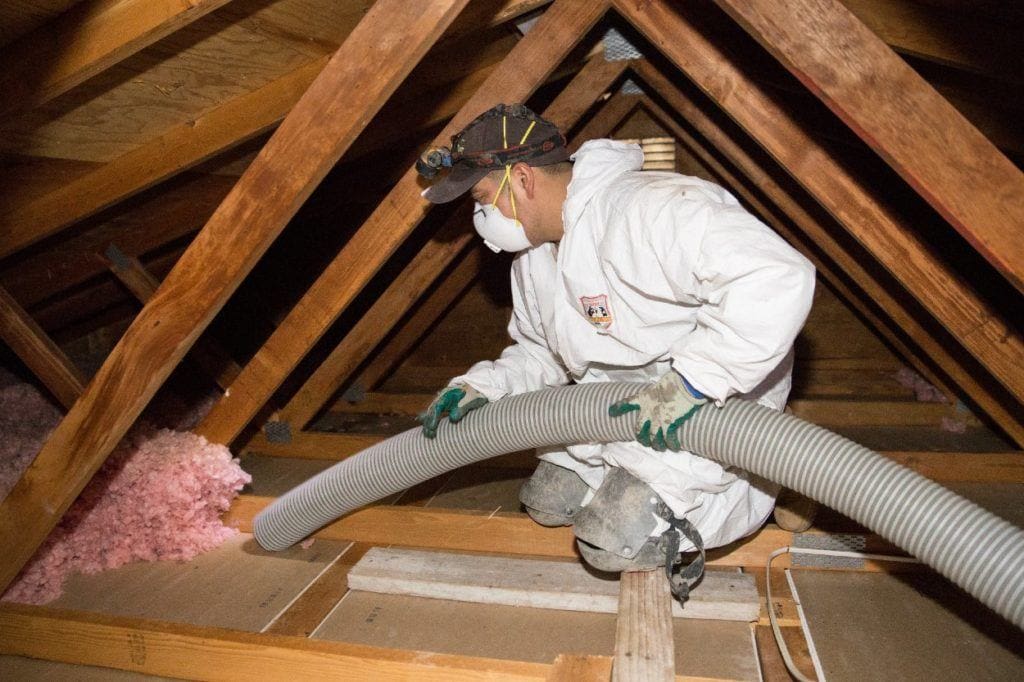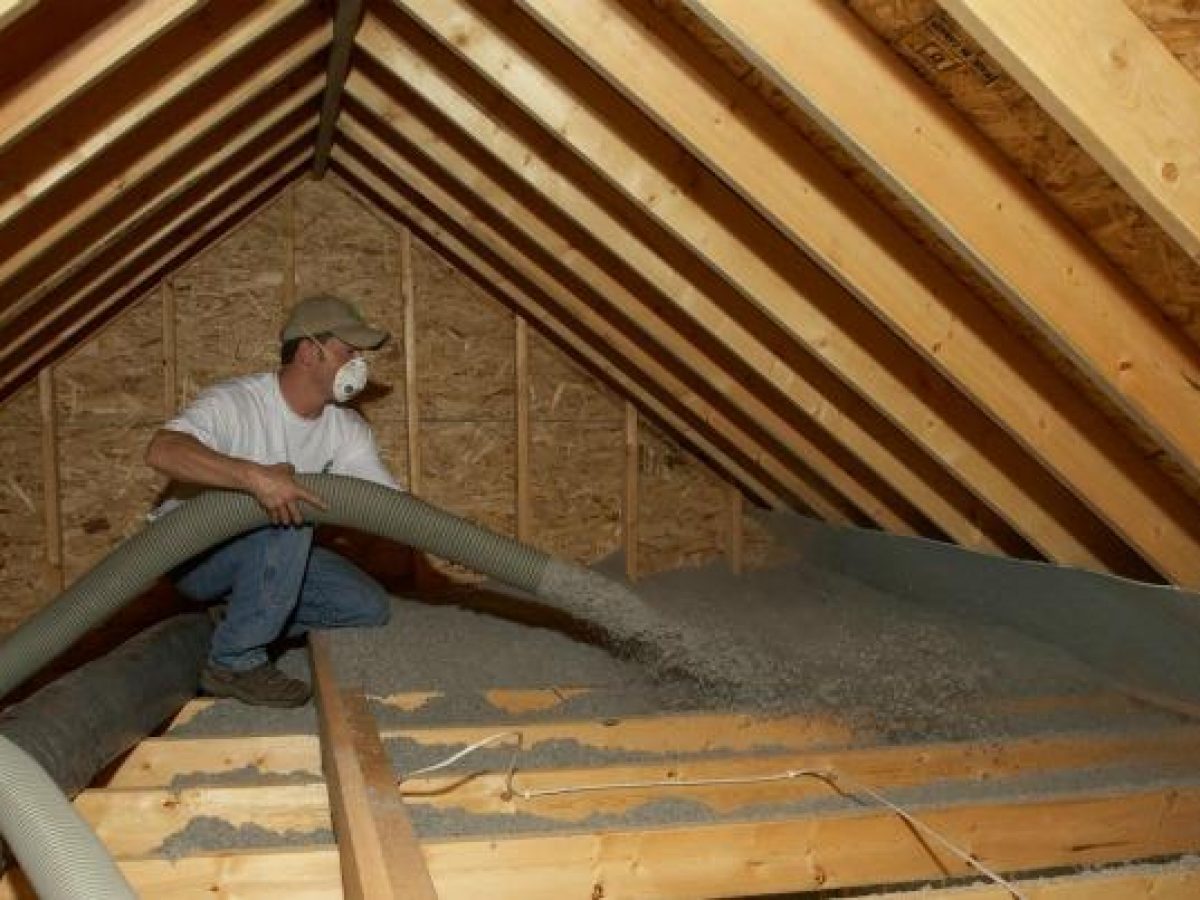Discover the Various Kinds Of Attic Insulation and Their One-of-a-kind Benefits for Your Home's Power Efficiency

Fiberglass Insulation
Fiberglass insulation is just one of the most generally utilized products for attic room insulation because of its superb thermal performance and cost-effectiveness. Composed of little glass fibers, this material efficiently catches air, creating a protecting obstacle that aids maintain constant interior temperature levels. Its high R-value per inch makes it particularly effective at standing up to heat transfer, which is important for power preservation in homes.
Installation of fiberglass insulation is fairly simple, often offered in batts or loose-fill types, suiting numerous attic configurations. Additionally, it is resistant and non-combustible to wetness, lowering the risk of mold development. This sturdiness adds to its long life, making fiberglass a feasible lasting investment for homeowners.
Furthermore, fiberglass insulation is typically made from recycled products, which boosts its eco-friendliness. The product can also contribute to soundproofing, reducing noise transfer between rooms. While it is important to wear protective gear throughout installment to prevent inflammation from the fibers, the general benefits of fiberglass insulation, including power financial savings and ecological considerations, make it a popular choice for boosting attic room efficiency and promoting a comfy living setting.
Spray Foam Insulation
Spray foam insulation is an extremely effective alternative for attic room insulation, understood for its exceptional air sealing and thermal efficiency. This ingenious insulation material is made up of a blend of isocyanate and polyol resin, which, when incorporated, broadens rapidly to load spaces and tooth cavities in the attic area. Its capability to adhere to numerous surfaces guarantees a continual barrier against air leakages, considerably lowering heat loss throughout chillier months and warmth gain during warmer seasons.
Among the vital advantages of spray foam insulation is its high R-value per inch, which implies it offers superb thermal resistance in a reasonably slim application. This is particularly useful in attic rooms where space is usually restricted. Additionally, spray foam can assist decrease wetness buildup, decreasing the threat of mold and mold development, which can be harmful to both the framework and indoor air high quality.
While the first cost of spray foam insulation may be greater than conventional choices, its long-term energy cost savings, paired with enhanced convenience and boosted home value, make it a beneficial financial investment for property owners looking for boosted energy efficiency. Attic Insulation DFW. Generally, spray foam insulation stands out as an efficient option for maximizing attic insulation
Cellulose Insulation

Cellulose insulation is a prominent choice for attic room insulation, mainly made up of recycled paper products treated with fire resistants. This eco-friendly choice is recognized for its exceptional thermal performance, successfully reducing warm transfer in both summer and winter months. The thick composition of cellulose allows it to fill up voids and voids in attic room rooms, supplying a smooth barrier versus air leakages.
One of the considerable Full Report advantages of cellulose insulation is its capability to resist mold and insects, owing to the fire resistant treatments utilized throughout manufacturing. Furthermore, it flaunts a high R-value per inch, which converts into remarkable power efficiency. Home owners can expect lower heating & cooling costs as a result of enhanced insulation.
Installment is usually completed through blowing loose cellulose right into the wanted area, enabling a fast and effective process. This technique likewise decreases disruption to the existing structure. Moreover, cellulose insulation has a reasonably reduced environmental impact, as its manufacturing procedure utilizes recycled materials, contributing to sustainable building practices.
Rock Woollen Insulation
Amongst the numerous alternatives for attic room insulation, rock woollen, likewise called mineral wool, sticks out as a result of its remarkable thermal and acoustic efficiency. Made from all-natural or recycled materials, rock wool is created by melting rock and rotating it into fibers, leading to a product that provides outstanding insulation buildings.
Among the considerable advantages of rock wool insulation is its high R-value, which shows its performance in standing up to warm flow. This characteristic not just boosts energy efficiency however additionally adds to preserving a comfortable interior temperature level year-round. Additionally, rock woollen is naturally fire-resistant, making it a safer alternative for homes as it can stand up to high temperatures without melting or releasing poisonous fumes.
Furthermore, rock wool insulation stands out in soundproofing capacities, efficiently lowering noise transmission between areas and from outdoors sources. In general, rock woollen insulation provides a detailed solution for enhancing energy performance, safety and security, and comfort in domestic setups.
Glowing Obstacle Insulation
Glowing obstacle insulation acts as an effective service for lessening warmth transfer in attic rooms, particularly in warmer climates. This type of insulation works by showing convected heat far from living spaces, thereby decreasing the quantity of warm that goes into a home throughout heat - Attic Insulation DFW. Usually made up of a very reflective product, such as light weight aluminum foil, glowing obstacles are mounted in attic rooms, facing the roof, where they can intercept incoming warmth from the sunlight
The key benefit of glowing barrier insulation is its capability to lower cooling costs. By reflecting heat rather than absorbing it, glowing obstacles can aid keep a much more steady indoor temperature, reducing the work on cooling systems. This performance equates into lower power costs and raised convenience for home owners.
In enhancement to power cost savings, radiant barriers can additionally add to enhanced indoor air quality. By reducing warmth build-up, they help reduce humidity degrees, which can protect against mold growth and improve overall air blood circulation. When set up properly, radiant obstacle insulation can be an invaluable enhancement to any type of energy-efficient home, making it a worthy factor to consider for house owners wanting to improve her explanation their attic insulation approach.
Conclusion
In conclusion, recognizing the various kinds of attic insulation-- fiberglass, spray foam, cellulose, rock woollen, and radiant obstacles-- enables home owners to make educated choices relating to power effectiveness. Each insulation kind provides one-of-a-kind advantages, such as premium thermal resistance, moisture monitoring, and sound depletion. By selecting the appropriate insulation material, substantial reductions in power expenses can be achieved, in addition to enhancements in interior convenience. Ultimately, the right selection contributes to an extra lasting living atmosphere and advertises overall energy preservation.

In conclusion, recognizing the different types of attic room insulation-- fiberglass, spray foam, cellulose, rock wool, and glowing barriers-- enables home owners to make educated decisions pertaining to energy efficiency.